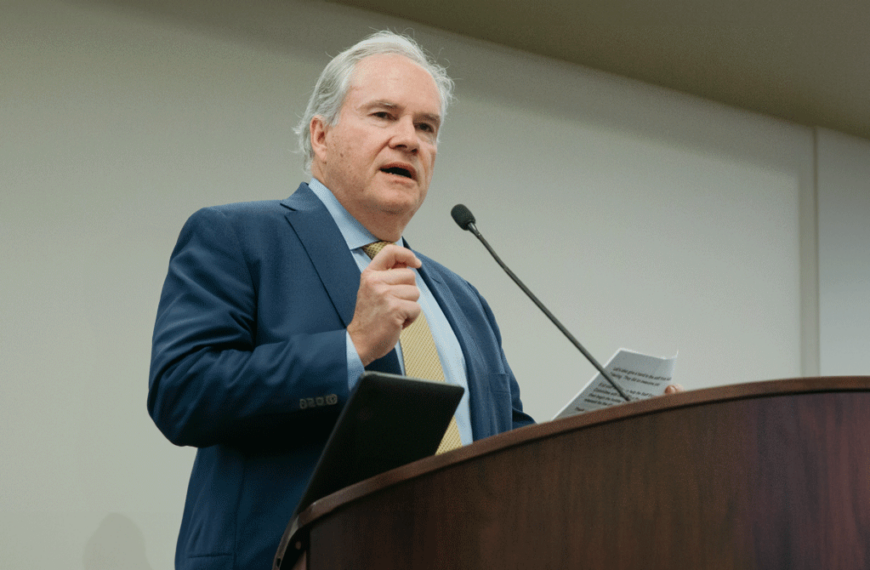Throughout the 140-day duration of this year’s regular state legislative session, Texas hospitals were presented with an extraordinary opportunity – and faced extraordinary pressure at the same time.
With the Texas Legislature entering the 2023 session with an unprecedentedly large budget surplus driven by oil and gas revenues, the potential existed for hospitals to secure key funding to help their post-pandemic rebuild. At the same time, anti-hospital forces and rhetoric – and the usual vying for slices of the budget pie – made many funding wins far from a certainty.
Withstanding that pressure, THA fought hard for hospitals and health care to have a strong presence in the 2024-25 budget, and lawmakers got the message. THA’s advocacy helped maintain and/or boost funding for the health care workforce and key aspects of Medicaid, behavioral health and maternal and women’s health, among other key areas.
Encouraging dollars for Medicaid, rural care
THA wanted to ensure overall Medicaid funding didn’t take a hit from the levels lawmakers appropriated for the biennium that’s now winding down.
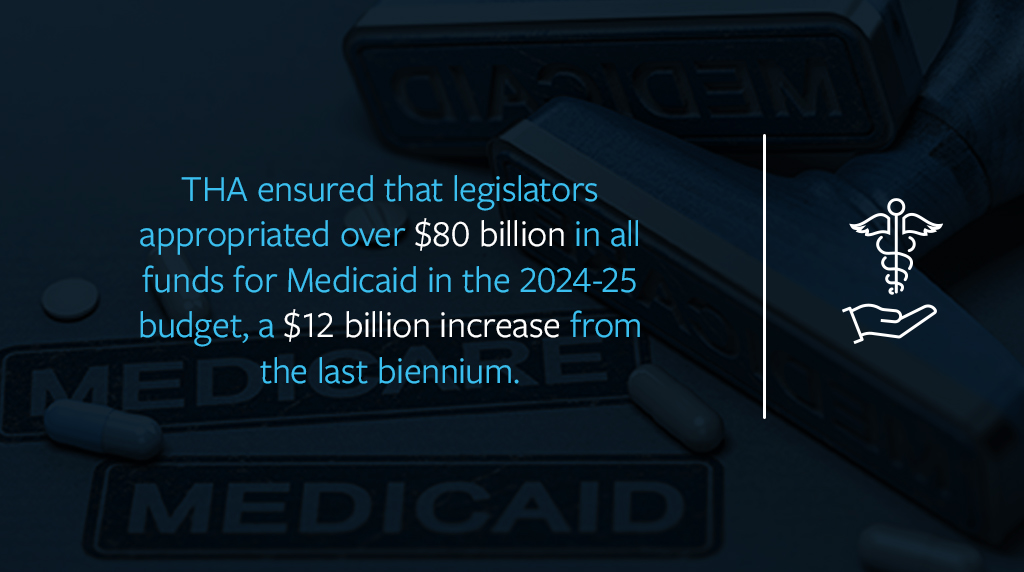
Lawmakers also instituted continued funding for Medicaid hospital add-on payments across the board. Both Medicaid trauma add-ons (funded at $180 million annually) and safety-net add-on (funded at $150 million annually) maintained level funding. Meanwhile, rural hospital add-ons increased by $36 million annually (at an annual total of $66 million) from the previous period.
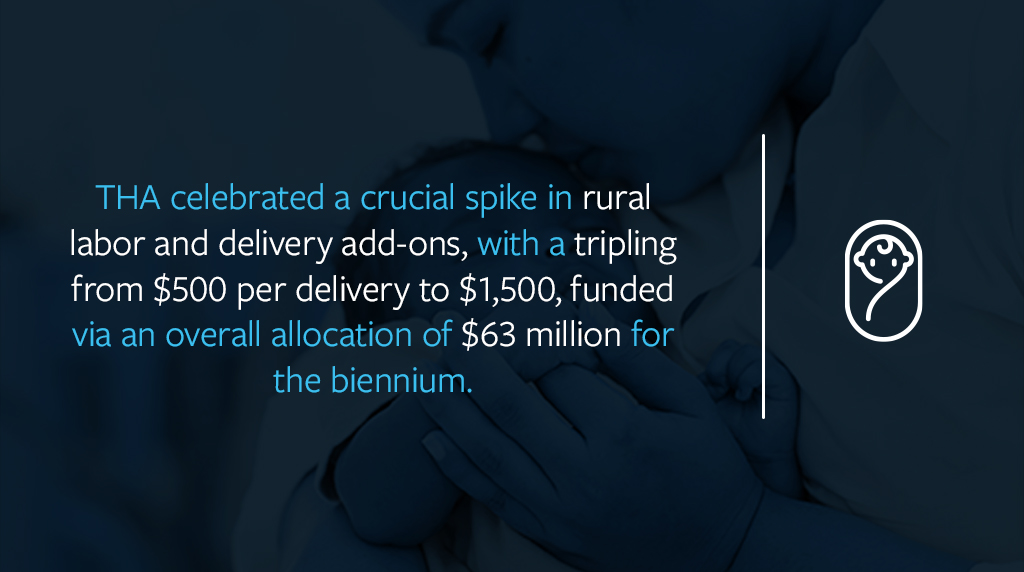
That increase will help maintain, and even boost, access to care in rural areas.
Among the many increases to rural hospital programs, the legislature authorized $50 million in new funds over the biennium for the Rural Hospital Stabilization Grant Program, which includes financial stabilization programs for rural hospitals, maternal care in those hospitals and rural alternative payment models.
Money for healthier minds
THA’s advocacy for strong investments in behavioral health facilities and programs bore fruit in this budget.
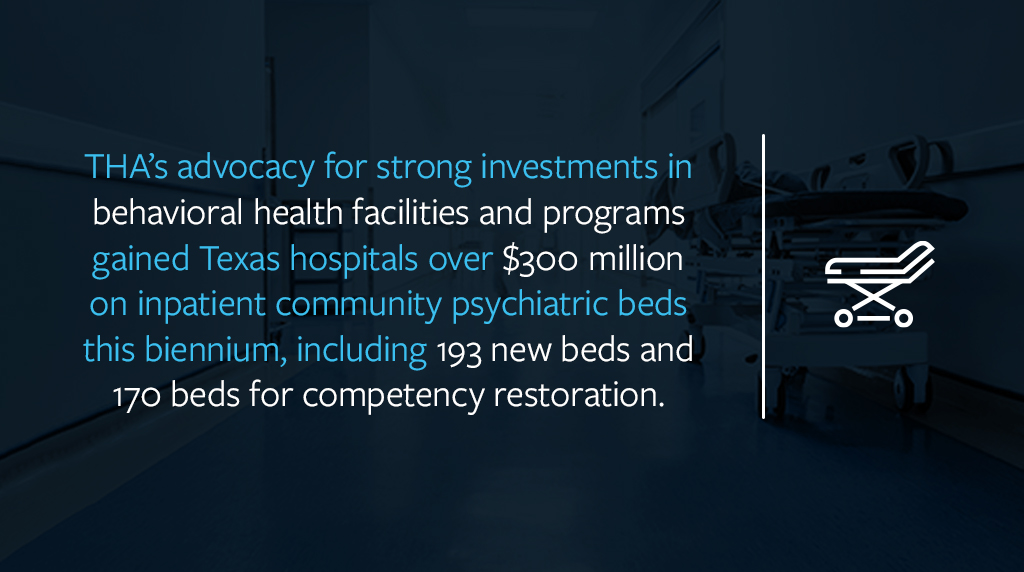
Senate Bill 30, the state’s supplemental budget legislation, included funding for added psychiatric beds through hospital construction in regions across the state.
Thanks to THA’s emphasis on workforce and behavioral health, a key program that encourages psychiatrists, psychologists and other mental health professionals to practice in mental health professional shortage areas received a gargantuan boost.
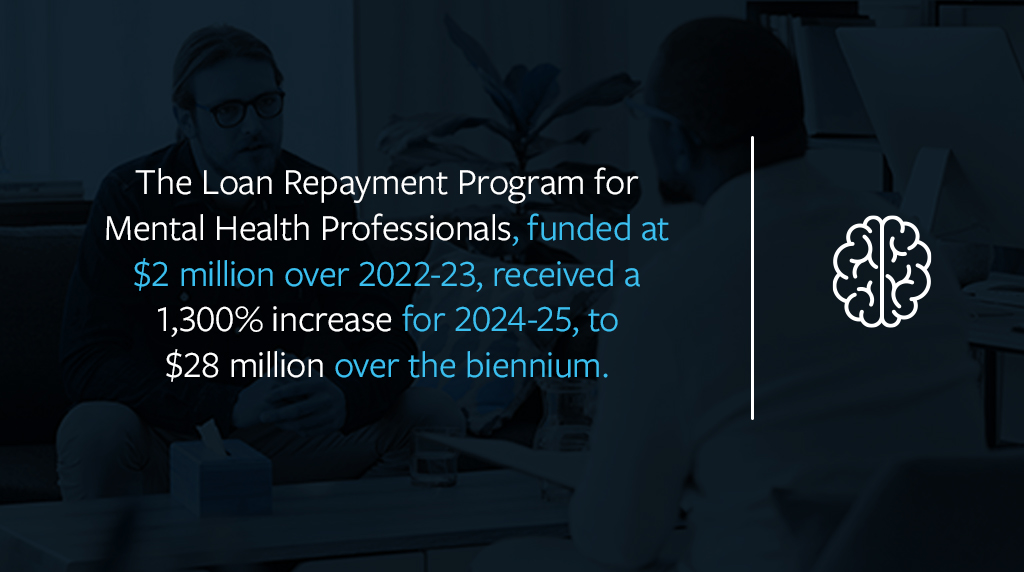
Rural hospitals were allocated $7.4 million in general revenue to implement telepsychiatry consultations. Unfortunately, THA’s dogged efforts to address the long-standing limit on adult inpatient Medicaid coverage for institutions for mental disease (IMD) did not result in that limit being lifted. As a result, Medicaid patients in those facilities between ages 21 to 64 are still only covered for up to 15 days of an inpatient stay.
Women’s and maternal health
THA’s advocacy also resulted in important budget gains for maternal care and women’s health. Through a $3.5-million-per-year budget allocation to TexasAIM – which helps hospitals and clinics implement maternal safety projects – the Legislature granted valuable dollars to help fight maternal mortality and morbidity.
Lawmakers also committed nearly $130 million for 2024 and $139.5 million for 2025 toward Healthy Texas Women, a state program that provides health resources and services.
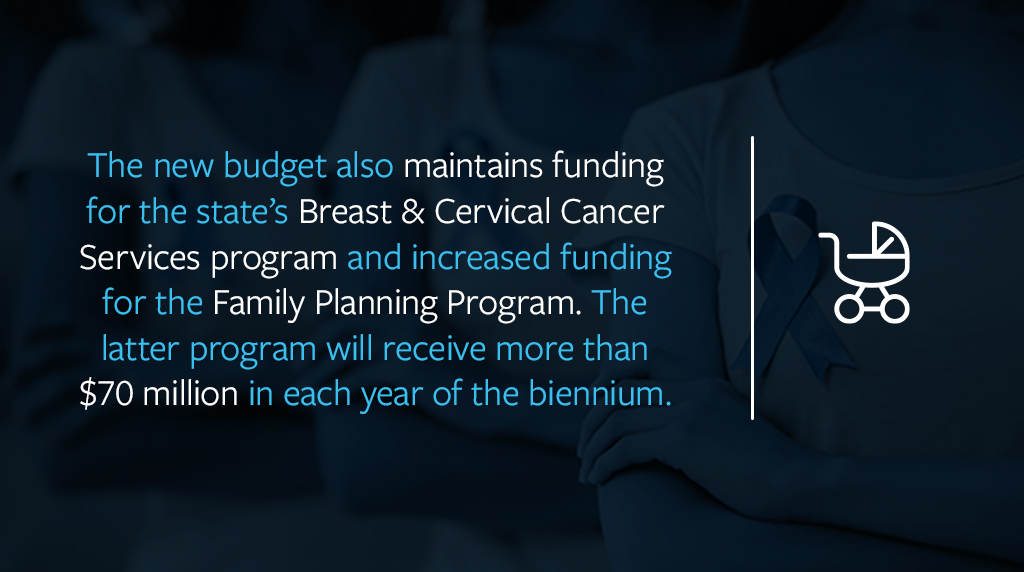
Workforce wins
THA’s focus on workforce challenges in health care, and the impact of escalated costs tied to them, was a key facet of budget talks. In the final budget, lawmakers demonstrated an understanding of the struggles of nurse shortages and staffing needs hospitals voiced before and during session. THA testified on multiple occasions for more support for nursing education and training. Key budget allocations for nursing – all increases over the prior biennium – included:
- $25 million toward nursing scholarships;
- $46.8 million for the Professional Nursing Shortage Reduction Program;
- $7 million for the Nurse Faculty Loan Repayment Program; and
- $6 million in new funding for the Nursing Innovation Grant Program.
To maintain the vital 1-to-1.1 ratio of residency slots to medical school graduates in Texas, legislators dedicated $233.1 million to graduate medical education expansion. The Physician Education Loan Repayment Program was funded at $35.5 million over the biennium, and $3 million went to the Residency Physician Grant Program, among other residency and education programs. And the Texas Workforce Commission will receive nearly $57 million for its Skills Development Fund over the biennium, and $38.7 million for apprenticeship support.
Ultimately, despite the unsuccessful rhetorical and legislative attacks threatening their sustainability, Texas hospitals kept their focus sharp, striving to make sure the final budget’s dollar divisions would promote health care for all Texans. Legislators listened, cutting substantial pieces of the pie for hospitals, and the final budget reflected many of the goals THA had its sights on as budget talks began.
Related articles from The Scope
Repeal of 2024 Cuts Are a Needed First Step to Protect Our Safety Net
Every piece of financial certainty our hospitals can get these days is appreciated – especially for the facilities that treat the most vulnerable Texans. For the rest of this year,…
Workplace Violence: Breaking a Cultural Norm
When the Texas Hospital Association pushed for key steps to protect health care workers from violence during last year’s state legislative session, it was trying to reverse a long-standing pattern…
How FQHCs Can Stay HRSA-Compliant
Health care compliance — adhering to rules, standards, policies, laws, and regulations related to medical practices — is about keeping operations running smoothly. It also promotes safe, high-quality care, and…
HOSPAC: Agents of Change
Out of all the ways the Texas Hospital Association pushes for better health care in Texas, HOSPAC – the only political action committee that represents all Texas hospitals – may…


